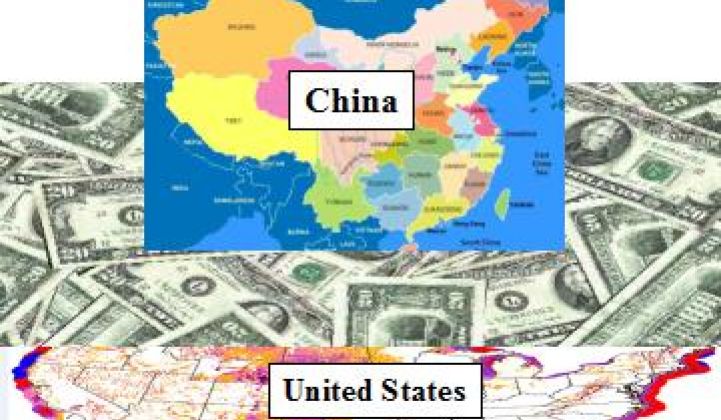At a lunch in Chicago last week, Senator Dick Durbin (D-Illinois) said he was “blown away” during a recent trip to China by how competitive their renewables industries had become, according to wind developer Michael Polsky, President and CEO of Invenergy. When Polsky asked the senator what he was going to do about it, Durbin shrugged helplessly.
“He didn’t know what to do about it,” Polsky said, because Congress cannot agree on stable, long-term incentives for U.S. renewables. “We’re debating something that should not be debated. It’s obvious. For the Chinese, it’s obvious. For the rest of the world, it’s obvious.” But, Polsky said, “We’re still debating.”
“I was listening to another panel,” Polsky went on, referring to a Milken Institute Global Conference panel like the one at which he was speaking. “They criticized the renewable subsidies all over the world. Like they are three people on the panel who are right and the whole world is wrong. It was just laughable.”
Venture capitalist Peter Labbat, a partner at Energy Capital Partners, remembered the 2007-2008 period when his firm made its big renewables commitments as a metaphorically “sunny day.” Demand was strong, and substantial support, including long-term tax credits, a federal Renewable Energy Standard (RES) and a price on emissions, appeared imminent.
With the changes that followed the Great Recession and the political swing back to the right, the day has turned “cloudy,” Labbat said. Incentives were lost to partisan bickering. Now, “there is a lot of supply chasing fewer and fewer opportunities to build projects, fewer and fewer PPAs, [and] fewer contracts on offer from utilities demanding renewables.”
Falling solar panel prices, low returns on PPAs for wind, competition from cheap natural gas and other factors, Labbat said, have drastically cut into the payoff an investor in renewables can expect. “Whereas you could get double-digit returns building a wind farm a couple of years ago, now you’re stuggling to get 8 percent or 9 percent. That makes it tough for private capital to take the risk.”
With the new spending austerity in the House of Representatives, even long-protected incentives like wind’s production tax credit (PTC) are, Labbat said, in jeopardy. “With the wind PTC expiring at the end of 2012,” he said, “if you’re building a wind farm today, you better be sure it’s going to get done by December 31, 2012, because you need those tax credits -- [and] if it’s going to miss that deadline, you probably aren’t going to take that risk.”
To avoid such loathed uncertainties, Labbat said, “We’re looking for projects with PPAs, we’re looking for projects where developers have capital, [... and] we’re looking for projects that can definitely get done on time.”
“China did make a decision back in July 2010,” said venture capitalist Patrick Eilers, Managing Director of Madison Dearborn Partners, “to spend $800 billion over the next decade to capture the entire manufacturing renewable chain,” while U.S. renewables investors continue to struggle for meager, fluctuating short-term tax credits worth perhaps $2 billion.
Adding insult to injury, Eilers said, the strongest competitors are “manufacturers from overseas [whose products are] delivered domestically, who have set up headquarters in Chicago, L.A. and New York.” The impotent congressional response, he said, might be domestic content rules that, if they even win passage, Eilers suggested, will not stop foreign manufacturers.
“Fifteen people in China’s ministry looked at the United States,” Eilers said, and realized it was a democracy and so “could not come to a decision to do anything for ten years” and so their $800 billion dollar investment was secure.
“What China does is not an accident,” Polsky agreed. “They’re gearing up for something really big.” Their plan, he said, is to “create their own markets -- to generate, to build plants, to really learn, to attain economies of scale. And then they will come to the world, while we are debating whether $2 billion is a good investment. And then we’re going to be blaming China for bad trade practices.”
But that is just the beginning, Polsky warned. “What I think Chinese manufacturers will do, they will bring not just technology but also money.” This, he said, “will dramatically change the landscape.”
A wind farm builder-owner-operator needs money to buy equipment, but, in this current climate of compromised incentives and disappearing venture investment, the builder needs project financing as well. With the cash the Chinese government has made available to its turbine manufacturers, they can entice purchases of their technology with promises of financing. “The rest of the manufacturers will not be able to compete,” Polsky said. “On the solar side, it’s the same,” he added.
“This is our problem,” Polsky said of U.S. policy. “If it’s not convenient, we pay no attention to the long term. For nuclear, we looked long-term. When it comes to renewables, we have to justify the investment today or it’s no good. If we start talking about the price of gas today, we have already lost the battle. If it is natural gas or oil, it doesn’t matter. It’s a finite commodity."
“It just makes sense that this country should have a policy to obtain a specific percentage of its energy from renewables,” Polsky finished. “A third, twenty percent, whatever. It just makes sense from any standpoint: economic, national security, diversity, the environment, jobs -- whatever reason you bring, it just makes sense.”



